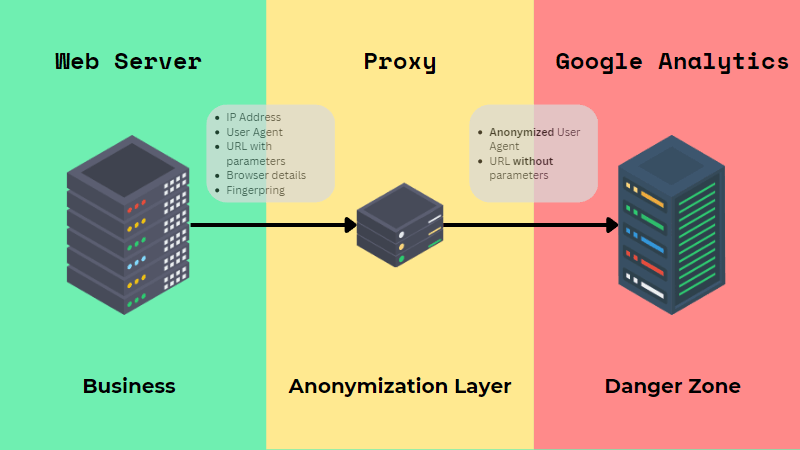Mastering the Art of Conquering Information Collection Limitations in Google Analytics for Better Decision-Making
In the realm of electronic analytics, the capability to essence significant insights from data is critical for notified decision-making. Google Analytics stands as a powerful tool for organizations looking for to understand user habits, track conversions, and enhance their on-line visibility. Nonetheless, data collection constraints within this system can hinder the accuracy and depth of the details collected. To absolutely harness the potential of Google Analytics for tactical decision-making, understanding the art of conquering these constraints is crucial. By using critical strategies and sophisticated strategies, companies can boost their information quality, unlock hidden understandings, and lead the way for more efficient and educated choices.
Data Top Quality Analysis
Information top quality evaluation entails reviewing different facets such as precision, completeness, consistency, and timeliness of the information. One key aspect to take into consideration is data precision, which refers to exactly how well the data shows the true values of the metrics being determined.
Efficiency of data is one more critical consider assessing data high quality. It includes making sure that all needed information factors are accumulated which there are no voids in the info. Insufficient information can skew evaluation outcomes and prevent the ability to get an extensive sight of user actions or site efficiency. Uniformity checks are likewise essential in data quality assessment to recognize any inconsistencies or anomalies within the data set. Timeliness is equally vital, as out-of-date data might no longer be appropriate for decision-making processes. By focusing on information top quality analysis in Google Analytics, organizations can improve the reliability of their analytics reports and make more enlightened choices based upon precise understandings.
Advanced Monitoring Methods
Utilizing advanced tracking strategies in Google Analytics can considerably boost the deepness and granularity of information accumulated for more comprehensive analysis and insights. One such strategy is event monitoring, which enables the surveillance of specific interactions on a site, like click buttons, downloads of data, or video sights. By implementing occasion tracking, services can acquire a much deeper understanding of individual habits and involvement with their on the internet material.
In addition, personalized dimensions and metrics provide a method to customize Google Analytics to details service needs. Personalized dimensions enable the development of brand-new data factors, such as user functions or customer sections, while custom-made metrics enable the tracking of one-of-a-kind performance indicators, like earnings per user or ordinary order value.
Furthermore, the application of Google Tag Supervisor can enhance the implementation of tracking codes and tags across a website, making it less complicated to handle and release innovative tracking arrangements. By using these innovative tracking strategies, businesses can open beneficial insights and optimize their on-line strategies for much better decision-making.
Custom Measurement Application
To boost the deepness of information gathered in Google Analytics beyond sophisticated tracking strategies like event tracking, organizations can apply custom measurements for more tailored understandings. Personalized dimensions enable services to define and accumulate certain data factors that relate to their special objectives Visit Website and objectives (What Data Does Google Analytics Prohibit Collecting?). By designating custom-made measurements to different elements on a website, such as user communications, demographics, or session details, businesses can acquire an extra granular understanding of how customers involve with their on-line properties

Acknowledgment Modeling Methods
Reliable attribution modeling is important for comprehending the impact of numerous advertising networks on conversion courses. By using the appropriate attribution design, companies can properly attribute conversions to the appropriate touchpoints along the consumer trip. One usual attribution model is the Last Interaction design, which gives credit report for a conversion to the last touchpoint a customer communicated with before transforming. While this model is simple and very easy to apply, it often oversimplifies the consumer journey, disregarding the influence of various other touchpoints that added to the conversion.

Information Experiencing Avoidance
When dealing with big volumes of information in Google Analytics, getting over data tasting is vital to make certain precise understandings are derived for notified decision-making. Information sampling occurs when Google Analytics approximates patterns in data instead than analyzing the total dataset, possibly leading to skewed additional info outcomes. By taking these proactive steps to lessen data sampling, organizations can extract a lot more precise insights from Google Analytics, leading to far better decision-making and boosted total efficiency.
Final Thought
Finally, understanding the art of conquering information collection restrictions in Google Analytics is critical for making educated decisions. By carrying out a complete data high quality analysis, implementing advanced tracking techniques, using custom-made measurements, using attribution modeling methods, and preventing information tasting, businesses can ensure that they have precise and trustworthy information to base their choices on. This will eventually cause much more effective strategies and better outcomes for the company.
